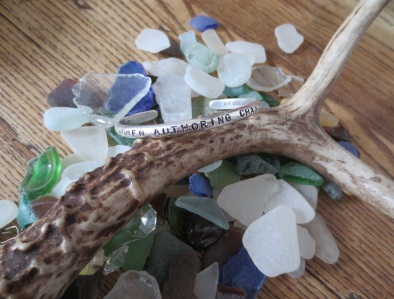A few years ago, my daughters and I attended an all day writing workshop, a Spring Salon at Hedgebrook, the community of women writers located on a beautiful farm on magical Whidbey Island in Washington State. As Susan and Lila and I rode the ferry from Seattle, we felt the power of our friendship and of our kinship. The mist of the salt-air blew across our faces and into our hair as we stood on the ferry’s deck, arms locked together in unity, silently watching the Island come closer as we crossed Puget Sound. Susan was seven months pregnant, and we were keenly aware that the next generation of “Schaffler women” was with us. Lillian’s story had begun months ago, and she was writing it now, even while in the womb. Hedgebrook’s mission is to “support visionary women writers whose stories and ideas shape our culture now and for generations to come.” We were eager to experience this day as three generations of women, to tell our stories amongst other, strong women writers. The Hedgebrook farm setting is serene and tranquil; you can feel the energy, and you can sense the spirits of the thousands of women who have written there, who have communed there and who have been brave enough to tell their stories. You can perceive the potency of these women’s words as they continue to affect millions of readers. The women of Hedgebrook author change.

My daughters and I decided to sign up for the same workshops, one with Storme Webber and the other with Kathleen Alcalá. We loved taking the workshops together; we were eager to share the results of our work, to hear one another read out-loud to the group, to listen for similarities and differences in the results of our assignments, to marvel in the spontaneity of our writing. We intuitively knew our unified energy could be felt by the other women in the group. I have participated in many writing workshops, and never did I experience the level of intensity as I did on this day. There seemed to be so much more at stake for us; we knew each other intimately. Our life stories are not all bright and cheery; I have made my share of mistakes as a mother; sister relationships can be brutal. Though my daughters and I trust each other, we are careful not to inflict pain. We bare our souls when we write, and sometimes our truths can be painful. We dive deep into our memory banks, conscious and unconscious, and we try to free the memories that live deep within our cells because this is how we write the truth. My daughters and I felt safe, un-judged, supported and loved at Hedgebrook. We took Lillian’s presence seriously and marveled when she danced in Susan’s belly. We knew she was listening. We knew she was excited to share her story with us.
Before we left the farm that day, my daughters and I purchased three little silver bracelets stamped with the words “Women Authoring Change,” one for each of us. I have not taken mine off since I put it on my wrist — except for when Lillian wants to wear it. This is the only bracelet of mine Lillian wants to wear. I have other beautiful bracelets, but the only one Lillian ever wants is the Hedgebrook bracelet. She puts in on her wrist and on her feet. She plays with it in the bathtub and holds it tightly in her fist while she goes to sleep. Somewhere in her cellular memory, I am certain Lillian remembers her day at Hedgebrook when she was cocooned in her mother’s womb. When Susan was in labor, she absolutely refused to take her bracelet off, despite it getting tangled in tubes and tape. Our day together at Hedgebrook helped to drive a profound sense of authorship within the world Susan creates for Lillian, a world of empowerment, focus, and possibility in love, adventure, and crazy fun.
Lillian is now two; she will be three in June. She is a serious little girl with a great sense of humor and style that is simply astonishing. She is an old-soul, a kindred spirit; she looks at you with knowing. Lillian is writing her story. She is the next generation of women authoring change. Between my daughters Susan and Lila, and my son Kana, there will be other granddaughters and grandsons who will write their stories and change the world, whose voices will be loud and strong. I look forward to witnessing these generational forces, and I am certain their stories will be influenced by conscious, unconscious, and even by ancestral, cellular memories.
 I will miss my father on this Father’s Day as I have on so many others. I will miss him differently than I have missed him for the majority of my life, on the days when he was alive and we were not talking to each other.
I will miss my father on this Father’s Day as I have on so many others. I will miss him differently than I have missed him for the majority of my life, on the days when he was alive and we were not talking to each other.







